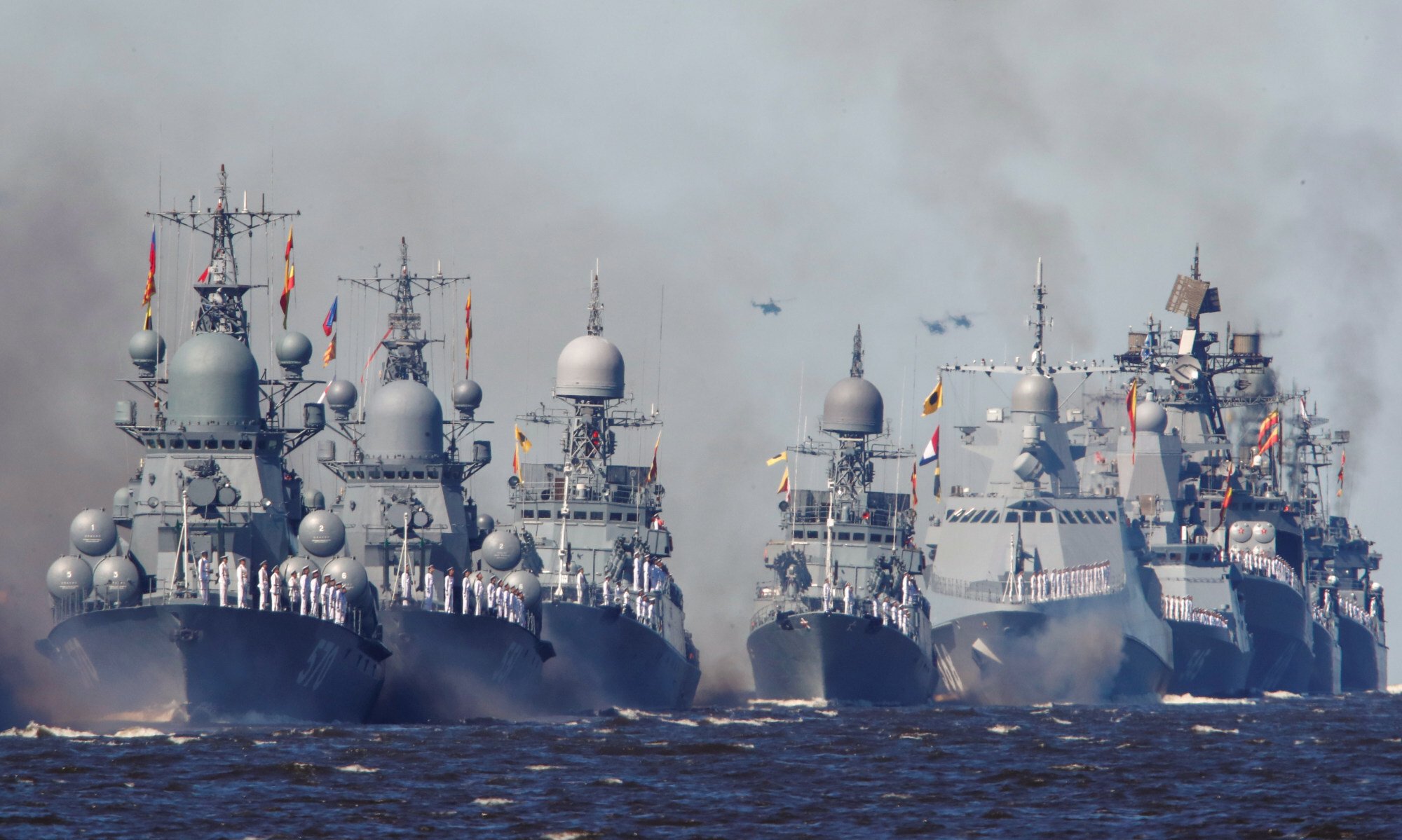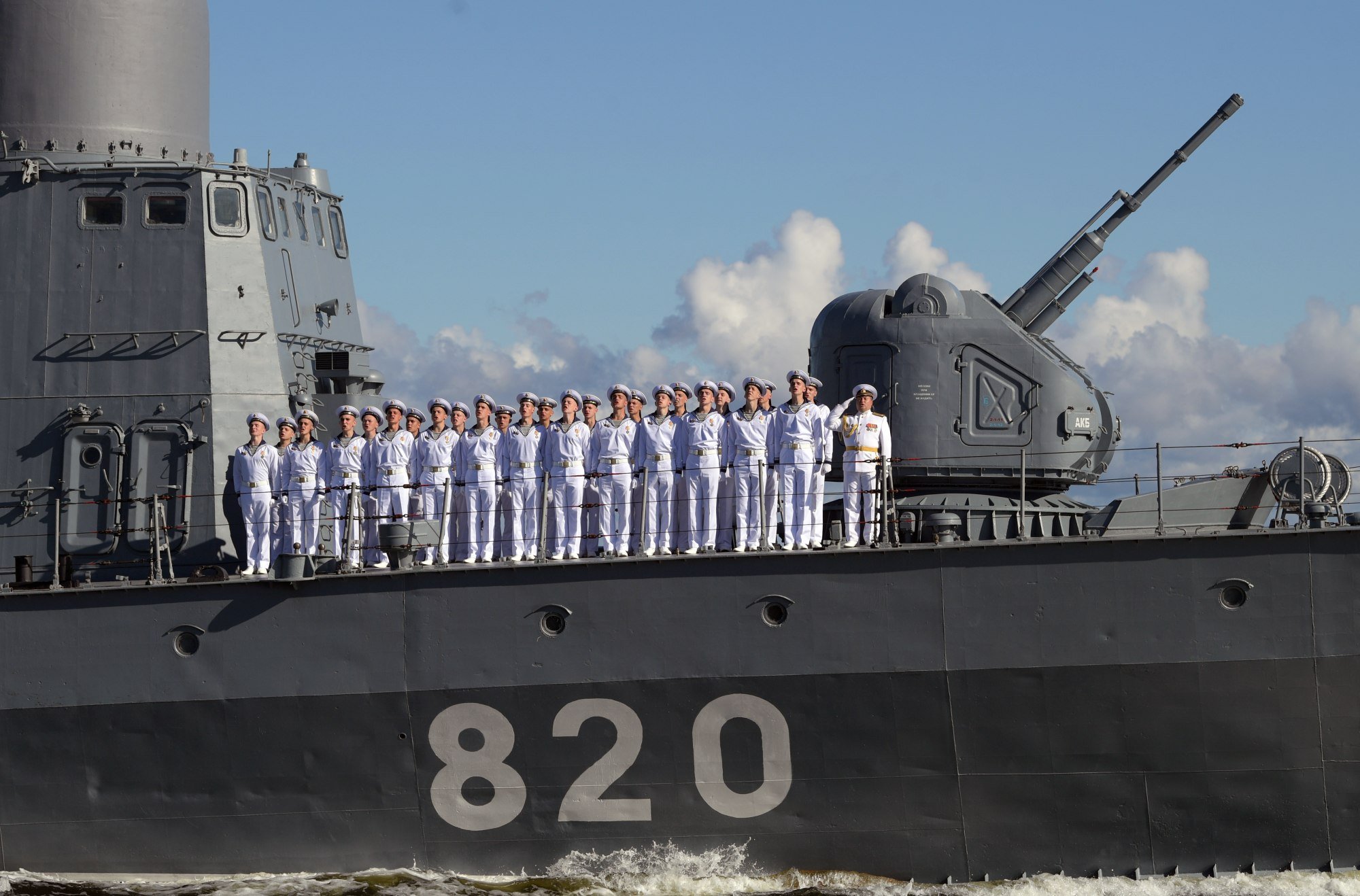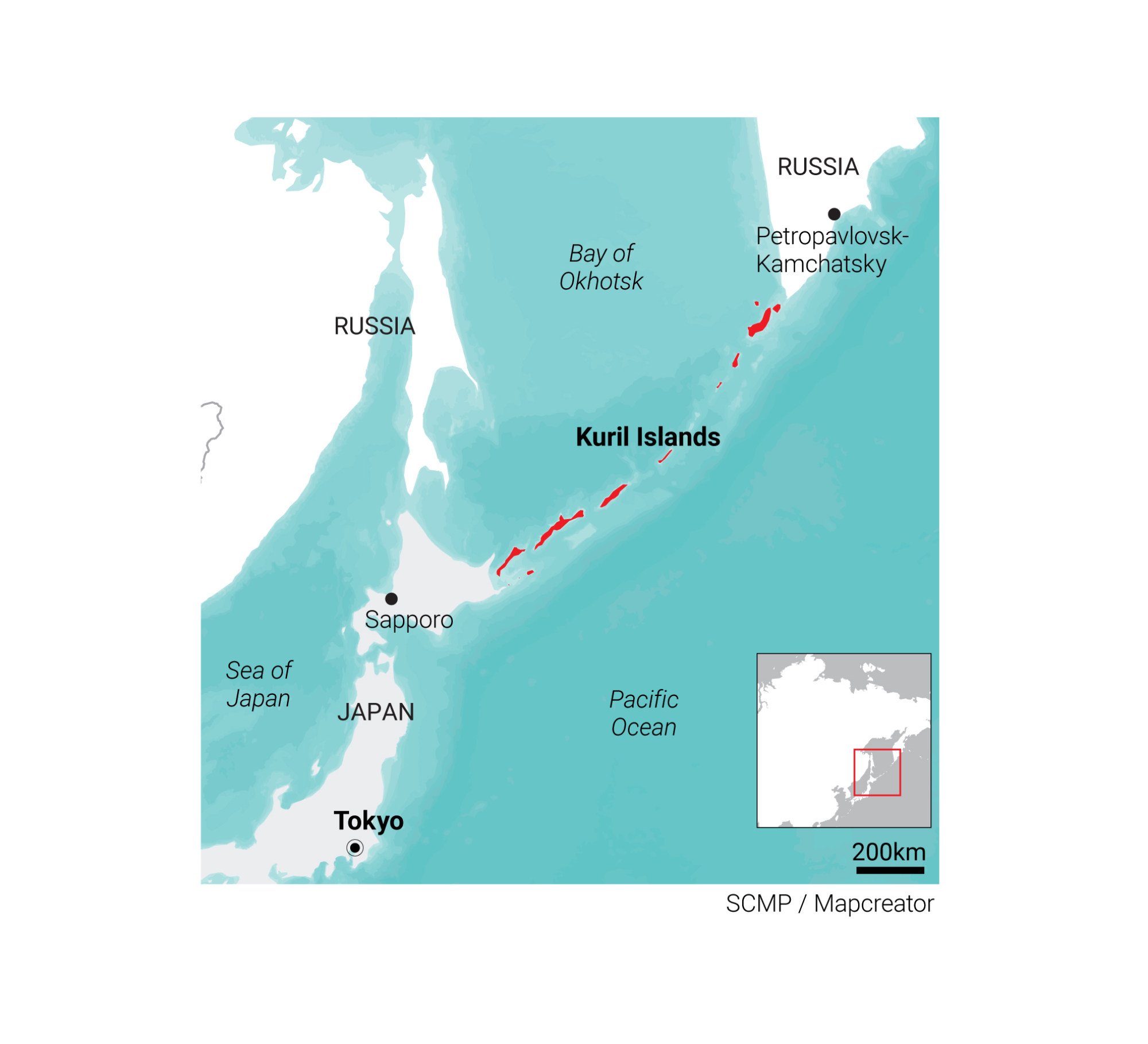
Ukraine crisis: Russian warships in waters off Japan are a warning to Tokyo against siding with US, experts say
- ‘Unusual’ deployment of submarines, destroyers and frigates is aimed at discouraging Japan from joining the US and Europe in sanctions, analysts say
- It also showcases the Russian military’s ability to operate on various fronts simultaneously and underlines Tokyo’s weak point on the Kuril Islands
They say the deployment is also meant as a broader message to Moscow’s rivals that its military is prepared for all eventualities.
Japan’s Ministry of Defence confirmed on Tuesday that a fleet of 24 Russian ships had been carrying out exercises in the Sea of Japan and the Sea of Okhotsk, off northern Hokkaido, since February 1. The vessels include submarines, destroyers and frigates.
“This deployment is very unusual in both its scale and timing,” said James Brown, an associate professor of international relations specialising in the Russian Far East at the Tokyo campus of Temple University.
“Conditions in the Sea of Okhotsk are going to be very testing, in particular, as there will be extremely low temperatures, significant ice cover and drifting ice, all of which combine to make operations dangerous,” he said.

In terms of timing, the deployment could only be connected to the situation on the Russian-Ukrainian border, he said.
“I see this as being aimed less directly at Japan but more part of a broader mobilisation of Russian forces wherever they are stationed as a show of military strength to the US and its allies,” he said.
“The priority appears to have been to put as many ships to sea as possible to demonstrate that power, as alongside the destroyers and frigates are supply ships and even a hospital ship.”
This is clearly Moscow telling Japan that it should not join the US and European countries
According to the Russian Ministry of Defence, the Pacific Fleet’s drills are about ensuring the safety of maritime traffic and protecting economic activities off Russia’s eastern seaboard.
The Russian defence ministry claimed its warships had challenged the US submarine and ordered it to surface. When the submarine failed to do so, Moscow claimed, Russian warships forced it to leave the area.

The US military attaché at the embassy in Moscow was summoned over the issue and informed that the US vessel had broken international law and created a national security threat.
The Pentagon said there was “no truth” in the Russian claims and insisted its submarines did not carry out operations within Russian waters.
Toshimitsu Shigemura, a professor of international relations at Tokyo’s Waseda University, said the Russian fleet’s activities were intended as a warning to Tokyo.
“This is clearly Moscow telling Japan that it should not join the US and European countries in their policies on Ukraine and that it should also resist pressure to impose sanctions on Russia,” he said. “The clear message is that the issue of the Northern Territories depends very much on what Japan does.”
Japan has claimed sovereignty over what it refers to as the Northern Territories since they were seized by Soviet forces in the closing stages of World War II. Russia refers to the territory as the Southern Kurils and has in the past indicated that it is willing to discuss returning some of the islands to Japanese control or joint economic development of the region.

That has been reinforced in recent days, with Kishida calling Ukrainian President Volodymyr Zelensky on Tuesday to express his support for “the integrity of the sovereignty and the territory” of Ukraine and to call for a diplomatic solution. Tokyo is also planning to offer US$100 million in emergency loans to Kyiv.
Shigemura said Moscow would have closely watched the meeting of the Quad foreign ministers on February 11, when officials from the US, Japan, India and Australia expressed concern at recent challenges to the international order in the Indo-Pacific region and reiterated their commitment to a “free and open Indo-Pacific”.
Brown said that from Japan’s perspective that position was largely aimed at China’s growing aggressiveness in the region, with Tokyo’s biggest fear being that Moscow and Beijing would continue to edge politically and militarily closer together.
“Japan will be closely monitoring the Russian fleet, but their biggest concern revolves around greater cooperation with China, which we saw last year when a joint Russian and Chinese fleet carried out exercises before sailing completely around the Japanese main islands,” he said.

